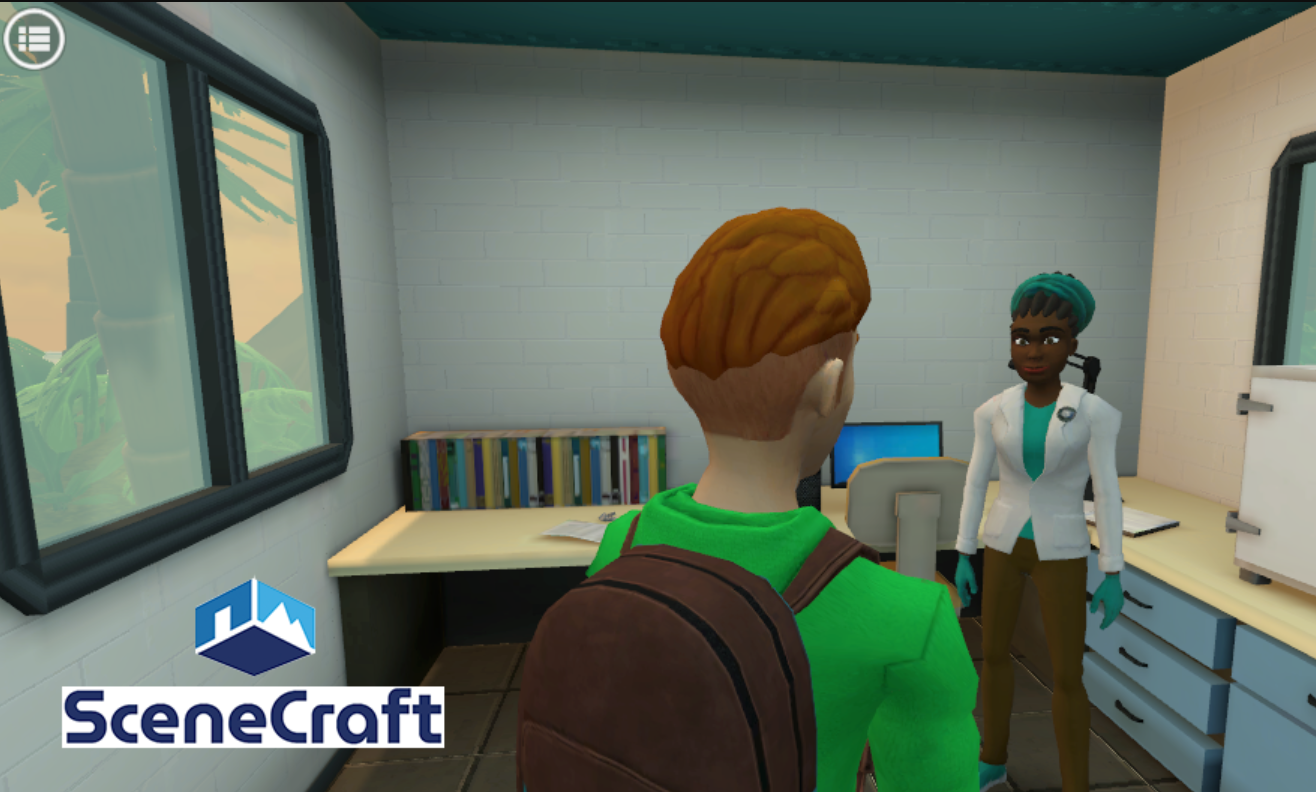SceneCraft: Teaching With AI Story Creation Tool
An interactive storytelling AI tool, SceneCraft was designed by university researchers and Digital Promise with funding from the National Science Foundation

SceneCraft was designed by the Engage AI Institute with funds from the National Science Foundation. This AI-in-education research organization has its headquarters at North Carolina State University and partnerships with the University of North Carolina at Chapel Hill, Indiana University, Vanderbilt University, and Digital Promise.
Teachers can currently apply for early access to SceneCraft through the tool’s website. Once teachers have access to SceneCraft, they can quickly create stories with AI that empower students to explore class subject matter in new and engaging ways while playing an active role in a story as it unfolds.
“These are interactive stories that are branching narratives, and the student can choose where they want to go,” says Jeremy Roschelle, Co-Principal Investigator for Digital Promise.
Although educators use generative AI to create the story, this is definitely not a chatbot, and students exploring each teacher-created story are not directly interacting with AI.
“So it's very safe to use, which is really important,” Roschelle says. He adds that another important feature is that it gives educators 100 percent control of the content students engage with.
SceneCraft In Practice
To create a SceneCraft story linked to class content, teachers who have access to the tool are led through a series of intuitive prompts. With the help of AI, they quickly develop a variety of scenes and different branches or scenarios that students can traverse. They can then deploy the story they’ve created with their students during class time.
Rochelle Urban, a senior research program manager at Digital Promise, says SceneCraft is primarily being used right now with middle school students, but the team creating it envisions high school students may utilize it as well. Science teachers, in particular, have been drawn to the tool, but English and History teachers have found creative uses for it as well.
Tools and ideas to transform education. Sign up below.
Regardless of the topic, SceneCraft tends to work best when there is debate or uncertainty around a subject.
“It's well-tuned to content where there's not a right answer,” Urban says. “When there are differing ways to look at a situation, then the characters come in and talk about those different viewpoints, and you can hear from lots of different characters about how, whatever that topic is, impacts them.”
Urban adds that this can be a particularly good way to debate various topics related to science.
Keeping Teachers In The Loop
The Engage AI Institute will soon launch a companion program to SceneCraft that will serve as a community and education hub for educators using the tool. U.S.-based educators can receive a stipend for participating in these projects.
Urban says there will not be traditional trainings; instead, there will be events during which educators can come together and "talk through what they’re trying to do, work on it [SceneCraft] together, and have a little fun,” she says. “This project is just about having fun, too, because stories are fun. That's part of what makes them different from just giving students, ‘Here is what the controversy is and do something with it,’ versus ‘Let's actually hear an authentic conversation about the controversy.’”’
For teachers, the tool is also really designed for them to be at the center of the AI use, which can alleviate some concerns about the technology.
“That's often talked about, but we've seen very few good realizations of Teacher in the Loop,” Roschelle says. “This is quite a thorough one, and teachers are reacting really positively to all the control they get with this. And it gives them the ability to do something that's pretty stunning in about 10 to 15 minutes, once they get used to it.”
Enjoy our content? Make sure to add Tech & Learning as a preferred source on Google to keep up with our latest news, how-tos, profiles, events, and more.
Erik Ofgang is a Tech & Learning contributor. A journalist, author and educator, his work has appeared in The New York Times, the Washington Post, the Smithsonian, The Atlantic, and Associated Press. He currently teaches at Western Connecticut State University’s MFA program. While a staff writer at Connecticut Magazine he won a Society of Professional Journalism Award for his education reporting. He is interested in how humans learn and how technology can make that more effective.

